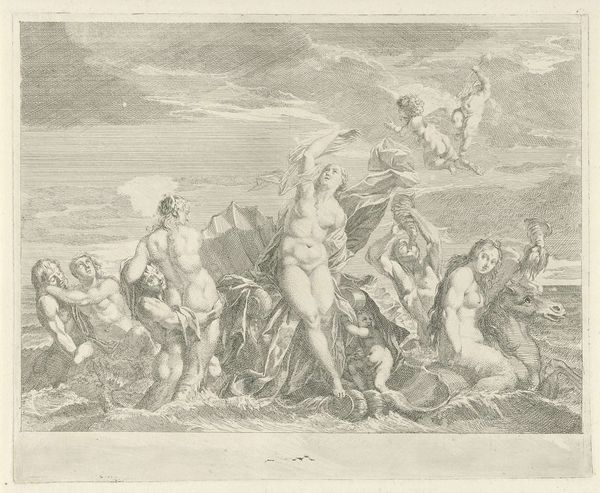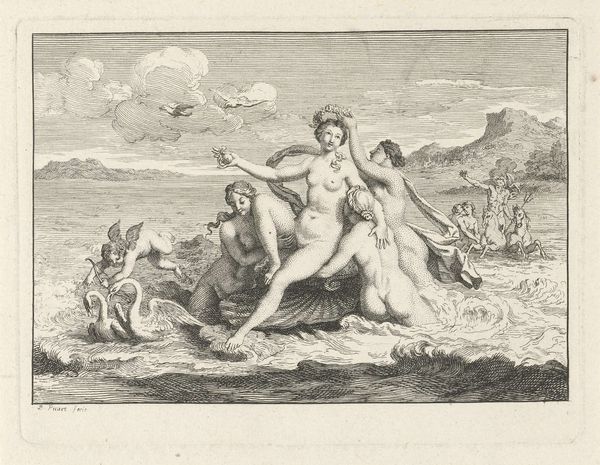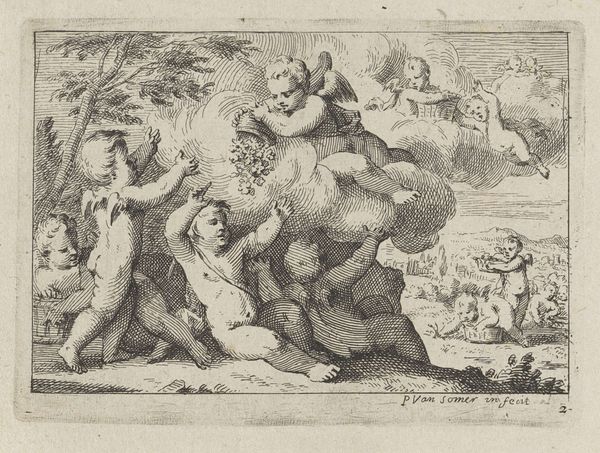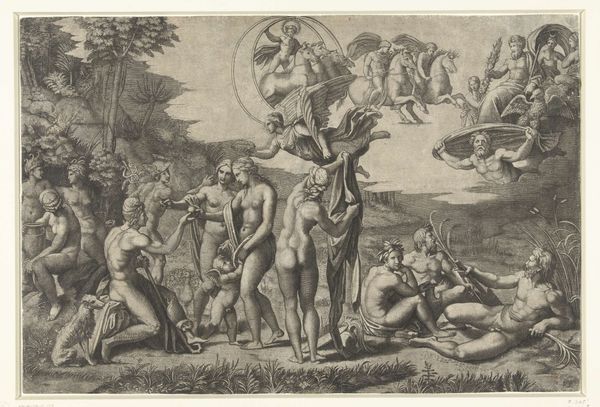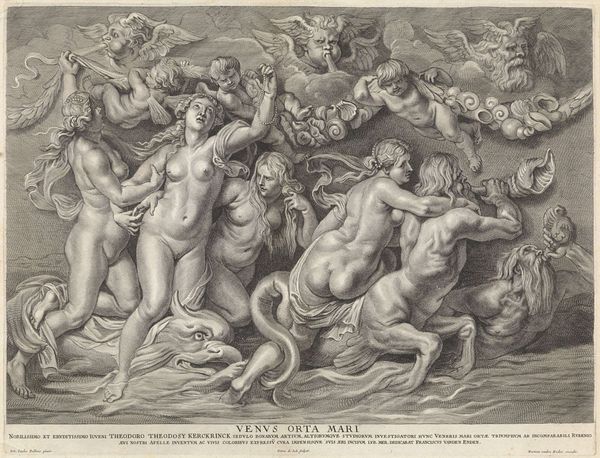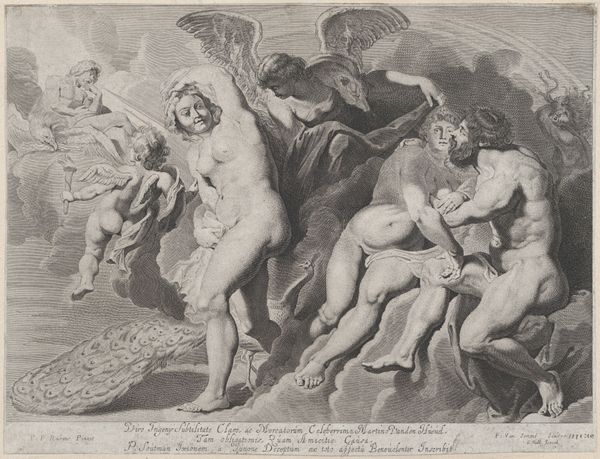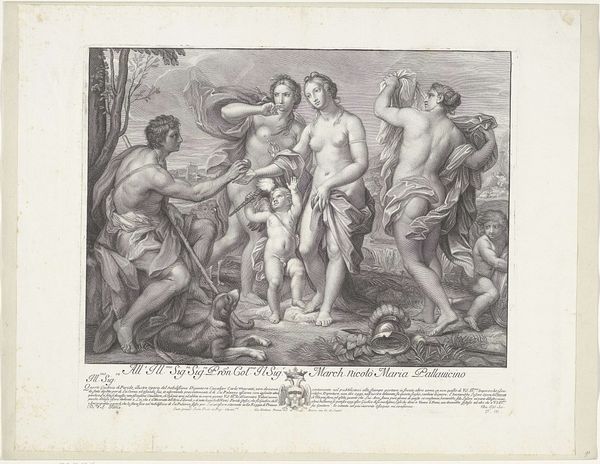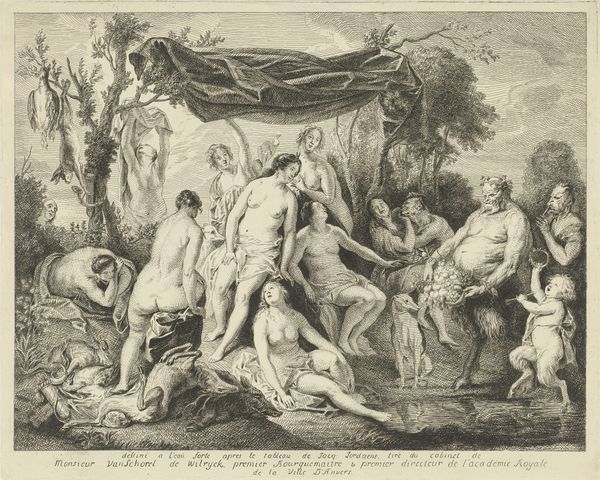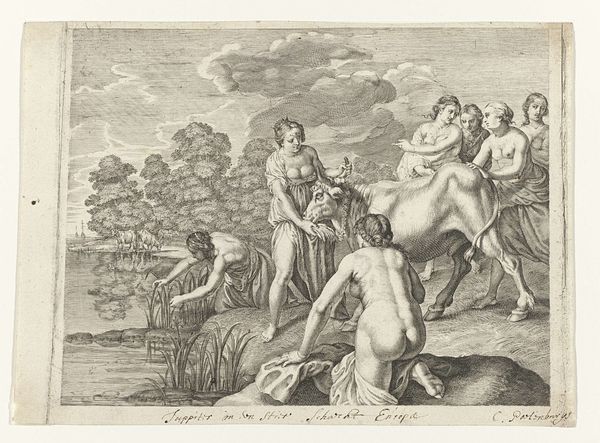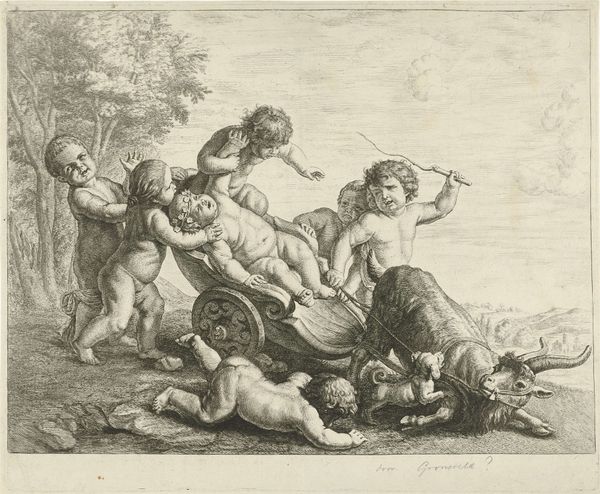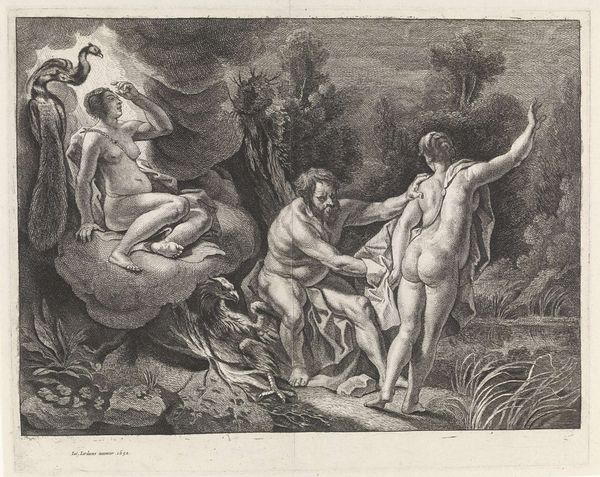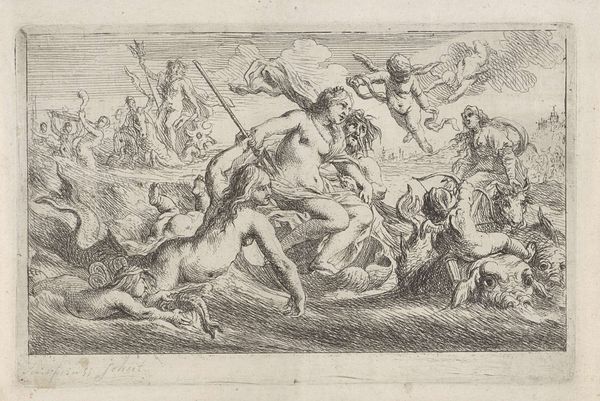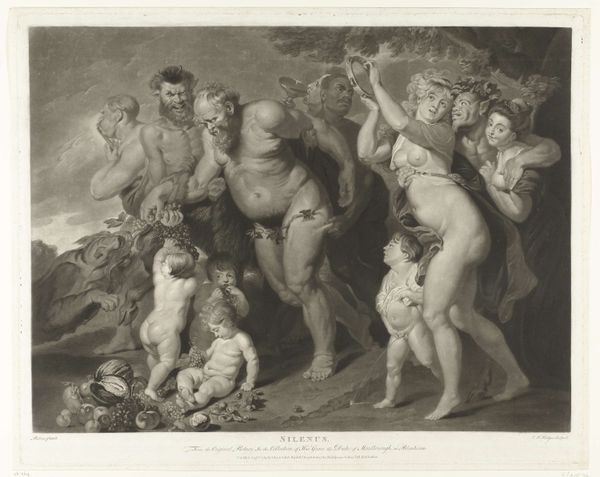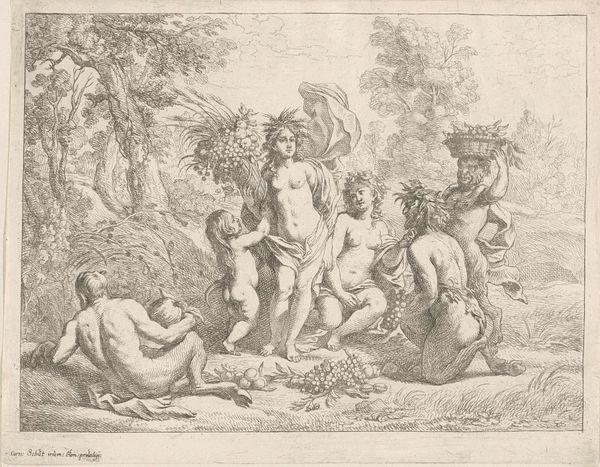
print, engraving
#
allegory
#
baroque
# print
#
figuration
#
limited contrast and shading
#
line
#
history-painting
#
nude
#
engraving
Dimensions: height 234 mm, width 290 mm
Copyright: Rijks Museum: Open Domain
Curator: Welcome to the Rijksmuseum. Today, we will explore Bernard Picart's engraving, "Triumph of Galatea," created between 1683 and 1733. Editor: My first impression is a sense of ethereal movement, almost dizzying, but there’s an undeniably triumphant aura to the composition. Curator: Indeed. Note how Picart masterfully uses line work to create a sense of dynamism. The composition is complex, almost Baroque in its extravagance, with Galatea as the central figure, emerging from a giant shell, surrounded by mythical creatures and cherubs. Consider the skillful deployment of line weights and cross-hatching, essential elements that construct both form and depth, typical features of Baroque art. Editor: I’m intrigued by the figures themselves. The portrayal of Galatea—the mythological sea nymph, semi-nude with flowing drapery— is undeniably romanticised. Does it perpetuate unrealistic expectations of the female form? Are we complicit in objectification by simply appreciating it? Curator: Her pose and positioning draw immediate attention, and while this emphasis on classical form may seem traditional, there’s an interesting duality at play between realistic observation and idealism. It also draws our attention to Baroque's fascination with portraying dramatic action. Editor: I also find the subtext of the "triumph" complicated. In the broader mythological narrative, Galatea’s story includes unrequited love and tragedy. Is Picart celebrating a victory, or simply depicting a moment of illusory joy amidst a more sorrowful reality? I think Picart does challenge a single meaning, opening space to deconstruct historical contexts with contemporary interpretations of power and gender. Curator: That’s a thought-provoking analysis. But I argue, such themes resonate powerfully across eras because they offer us an enduring aesthetic experience in addition to any possible symbolic significance. Editor: Art rarely exists in a vacuum, though. Appreciating Picart's technique without considering the societal lens of the time—and ours now—feels incomplete. Curator: Well, "Triumph of Galatea" really allows us a very engaging look into printmaking, its evolution and the socio-historical context that shaped its reception. Editor: It makes one wonder how viewers interpret the piece through contemporary socio-political awareness of the cultural construction that informed its production.
Comments
No comments
Be the first to comment and join the conversation on the ultimate creative platform.
